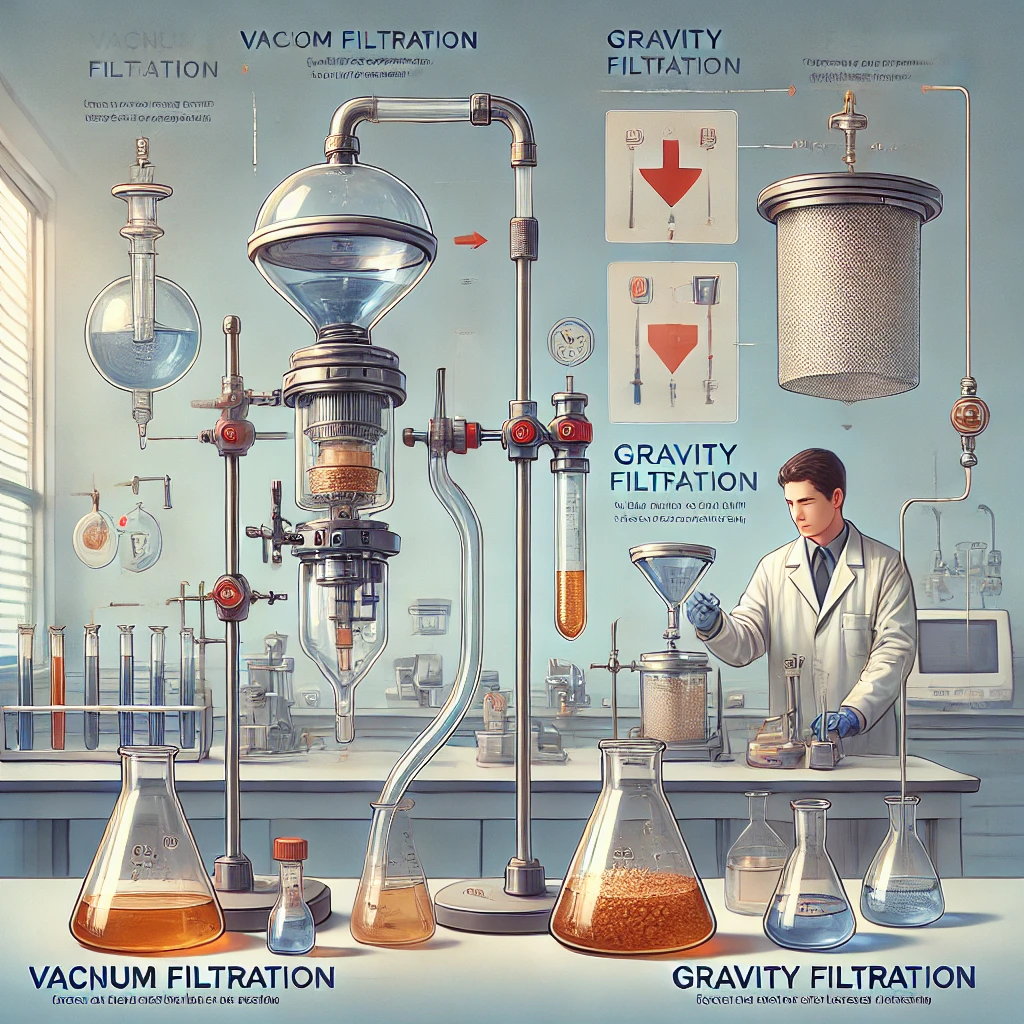Difference Between Gravity Filtration and Vacuum Filtration


January 3, 2025
If you work in a lab setting, you’re likely familiar with the solvent filtration process. However, if you’re new to laboratory work or haven’t had the chance to operate various filtration systems, understanding the differences between gravity filtration and vacuum filtration is essential. Let’s explore how these two methods differ and the advantages each offers for your experiments.

As the name suggests, vacuum filtration relies on the power of a vacuum source to perform the filtration. This method typically involves using a Buchner funnel and flask along with specialized filter paper. Thick-walled tubing connects the Buchner funnel to the vacuum source, enabling the process.
Vacuum filtration is particularly effective when you need to collect solid materials quickly and efficiently. However, it’s not suitable for preserving liquid components, as solvents tend to evaporate during the reduced-pressure process. This makes vacuum filtration ideal for applications where the solid residue is the primary focus, such as in C1D1 extraction labs where precision and speed are critical.
Gravity filtration, on the other hand, uses the force of gravity to separate components. This method requires a funnel and filter paper set up over a flask. Gravity filtration is most useful for separating solids from liquids when the liquid is the desired product.
While this method is slower than vacuum filtration, it’s gentle and ideal for situations where both solid and liquid components need to be preserved. Gravity filtration is often the method of choice in applications involving delicate solutions, making it a valuable tool for laboratories focused on safety and accuracy, such as those utilizing C1D1-rated equipment.
The primary differences between gravity and vacuum filtration lie in their operation and applications:
Each method has its own benefits and limitations, making it essential for lab technicians to understand when to use each. By mastering the differences, you can select the most appropriate filtration technique for your experiments and achieve optimal results.
Understanding the differences between vacuum and gravity filtration is vital for any lab technician or researcher. Whether you’re isolating solids or preserving liquids, choosing the right method ensures efficiency and accuracy in your work. If your C1D1 lab requires advanced filtration systems, explore our tailored solutions at C1D1 Booths. We provide everything you need to ensure compliance, safety, and effectiveness in your laboratory operations.